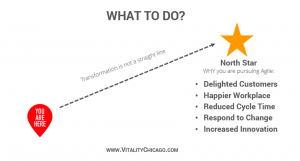It’s been crazy, Rhonda, VP of Talent Management at a major global Pharma company, says to me last Thursday.
3 nights in a row I have been working until 1 in the morning. Sigh. Too much. Too much.
Yup. Crazy. Rhonda knows this can’t go on. The situation screams under-resourced. And as is the case in every under-resourced scenario, it begs the question of how we make use of our time.
The following morning, I sit in my car at 5:30 am (now you might think THAT is crazy), driving to meet my trainer for a work-out. I am listening to an episode of my esteemed colleague Meredith Bell’s “Strong for Performance” Podcast. Episode 100. Meredith is chatting with renowned Business and Life Coach David Wood.
David and Meredith talk about Power Sprints.
The basic idea is this. Work in chunks of 4 Power Sprints. 25 minutes of focused work, followed by a 5-minute break. 3 more of these chunks, followed by a longer break of 15 – 30 minutes.
The bad news is Time flies. The good news is you’re the pilot.“
Michael Altshuler
Power Sprints remind me of the function of sprints in the Scrum Agile work methodology. They are the building blocks of the Pomodoro technique, a time management method developed by Francesco Cirillo in the late 1980s in Italy. Pomodori are 25-minute bursts of focused work, followed by a 5-minute break.
Power Sprints make me think, as well, of what I know as an Instructional Designer for training programs. Give people too much information too quickly, and the brain shuts down. Overload. Great instructional design delivers information in manageable chunks, followed by time to absorb and synthesize. Sprints. Breaks.
We’re talking personal energy management here.
All the Power Sprints in the world will not save Rhonda in her extreme resource crunch. But as I listen to David Wood and Meredith Bell in the car, my mind is reconnecting a couple of classic dots. We have time, and we have personal energy. More successful people harness these 2 dots, and their synergy, better than others.
Let us dissect the rewards of being a power sprinter together, shall we? Here are a few that immediately come to mind.
4 Benefits to Working in Sprints
I use time consciously.
By dividing my work time into small, manageable chunks, I set myself up to be successful in accomplishing my tasks. And by making these chunks deliberately shorter than the traditional 1-hour time unit embedded in corporate life, I heighten my focus and minimize the urge to distract.
The psychology of it? I like to feel like I have accomplished something in my 25 minutes. I want to step into my 5-minute break with a sense of completion. And because I commit to my 5-minute break and don’t like to have “unfinished business” looming over me, I have fortified my drive to complete a task or sub-task. Most importantly, I don’t negotiate away my 5-minute break as I have done with all of the lunch breaks I promised myself I would take and never do.
I generate flow.
By working in manageable sprints, I make it easier for myself to fully surrender to a task. This full surrender supports a sense of complete engagement. I am less likely to dilly-dally, more likely to commit. Because I know that a break will be coming up. My commitment, at its finest, leads to a state of flow. Flow is the ultimate work-joy experience where I am so immersed in what I am doing that I, ironically, lose all sense of time. Which leads us to the next benefit.
Either run the day or the day runs you.”
Jim Rohn
I keep track of my use of time.
When I keep a timer running as I work, I stay mindful of the passing of time. While you might think, gosh, doesn’t that create a lot of pressure?, it actually does the opposite. I don’t have to obsess about time because a gadget is tracking it for me. But because I am tracking how I spend my time, I remember the choices I make within that time. This mindfulness encourages constant recalibration and adaptation. Time doesn’t just “get lost” or disappear. I generate a higher sense of accomplishment with my time which feels GREAT.
I rejuvenate myself.
Sounds wonderful, right? By incorporating frequent breaks in between Power Sprints, I prevent mental and physical fatigue. Beware, however. You will be tempted to “power through” your breaks, especially when a task is not yet completed. Taking a break goes against how many of us are conditioned to work. We push and push and push until we crash.
The biggest opportunity for many of us aren’t the Sprints. No, it’s the breaks. We don’t know how to take a break. We want to check more emails, go on line, catch up on news. You know. What does it look like for you to actually STOP? For just 5 minutes? What might you do in those 5 minutes that is not about further stimulating your brain? Gaze out at nature? Listen to calming music? Meditate? Go for a quick run around the block? Experiment. Explore new habits for your breaks. Fully stopping may be your new revolutionary frontier amid the Power Sprints.
About Rhonda?
Here’s what she and I kicked around. We had the classic “do you really need to attend all those meetings conversation.” You know that one, as well. For the need-to-be-present but not top-tier-critical meetings, consider this. Let the leader of the meeting know that you’re eager to attend but due to other pressing deadlines, can only stay for the first 25 minutes.
Power-sprint that meeting. Take your break. Move on. Makes a heck of a lot of sense, doesn’t it?
Business & Finance Articles on Business 2 Community
(41)





